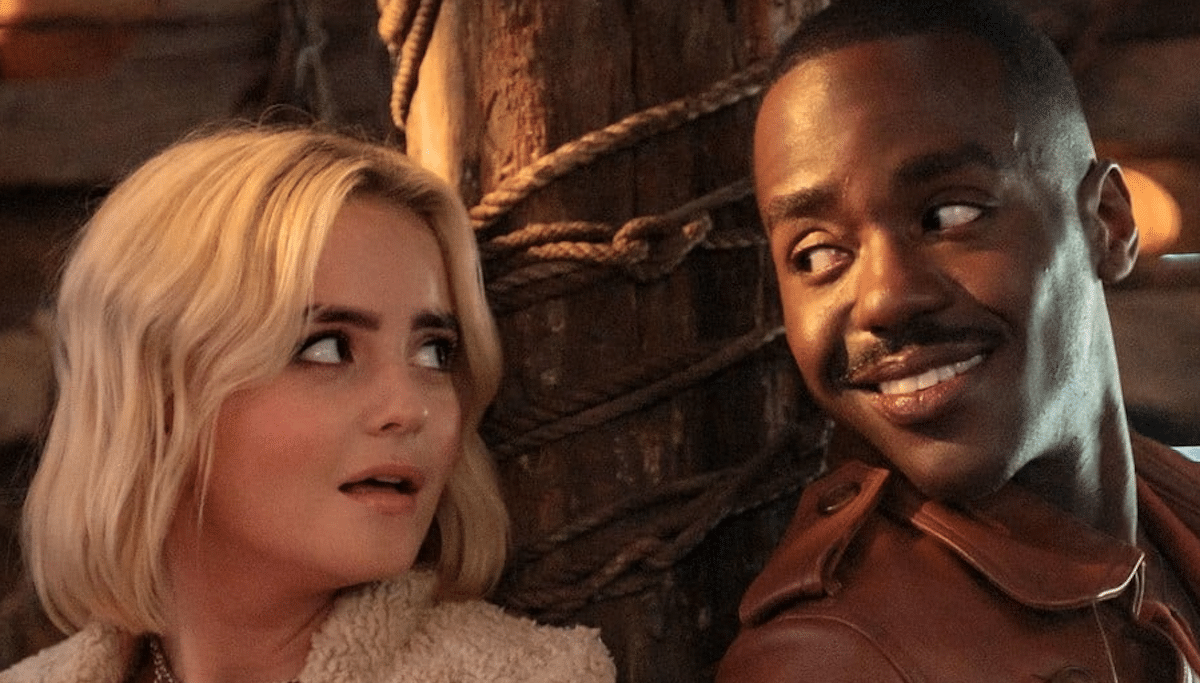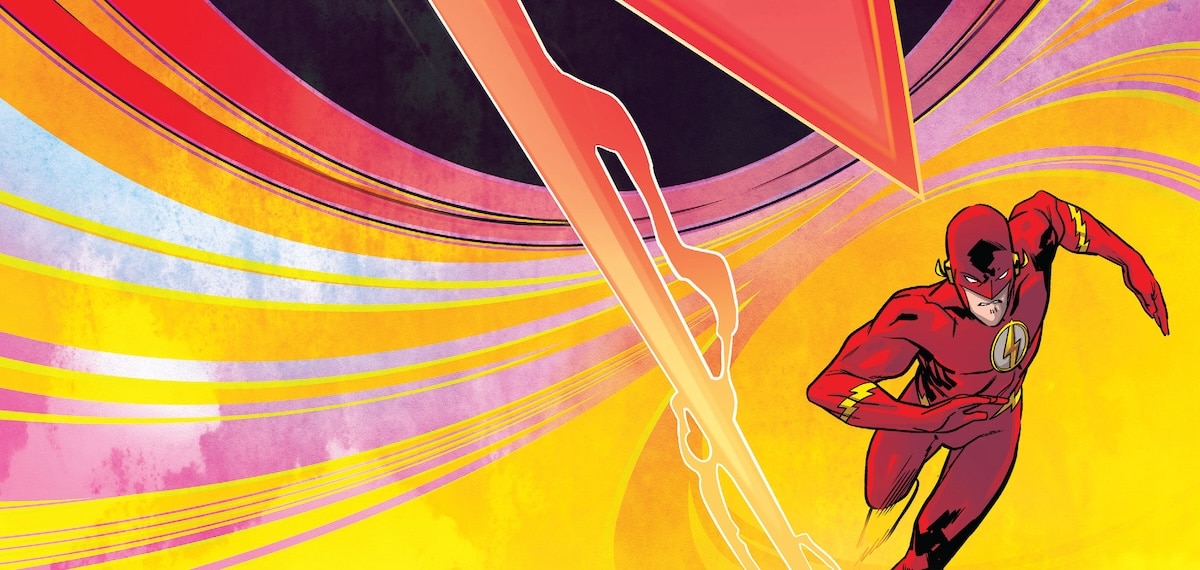Retailer roundtable: Are graphic novels a “sh*tty* business model?http://ift.tt/1f24jRL
A few weeks ago, retailer and CBR columnist Brian Hibbs commented on the Fantagraphics Kickstarter campaign, but along the way gave a few sharp toed kicks to the ribs of graphic novels in general. Hibbs has never been a huge supporter of the economic model of the OGN, but this was his strongest salvo yet:
Original Graphic Novels (OGNs) are a shitty business model.
It is shitty for creators, it is shitty for stores and it is shitty for publishers. Especially in the face of a marketplace that is not only rock-solid non-returnable, but that has evolved a mechanism to draw significant numbers of repeat customers in for regular, scheduled and most importantly paid, weekly visits. That’s a remarkable advantage for a marketplace, and one that doesn’t have any really significant comparable in any other art form.
But-but what about those done in one GNs that are everywhere? How can something that is shitty have produced Fun Home, Exit Wounds, Scott Pilgrim, You’ll Never Know, New School, etc etc etc?
I think serialization inherently produces more work, as well — beyond the lash of the regular ongoing deadline, I think that a serialization-first model allows and encourages work that isn’t already fully-formed — would we have had Chester Brown’s “Ed the Happy Clown” or Dan Clowes’ “Like a Velvet Glove” in an OGN-only world, or would those projects been abandoned when the cartoonists figured out they didn’t have an ending? I think the world is a better place for having those works (however flawed they are) in it, and I don’t think we’d have come to a place where “Paying For It” or “Wilson” could have been created if those earlier works hadn’t come out serialized originally, and the cartoonist hadn’t built an audience and a following.
I was going to write a long riposte to this about how digital sampling allows for the serialization model in a modern environment (of which Hibbs says “the connection between online viewing and making a purchase at the cash register is tenuous, at best” even though the more digital comics there are the more print comics have been selling) and I read Johanna Draper Carlson’s recent analysis of the piece, but then I thought. “Waitaminnit, I’m just a big GN reader and not a periodical fan at this time, but what do OTHER retailers think? That’s more interesting than me getting on my horse again. So I reached out to a few respected retailers for their thoughts and this is what they said about the mix bewteen periodicals and GNS in their stores:
_______
Joe Field
Flying Colors
Concord CA
I’m not nearly as negative as Brian is about OGNs, but I wouldn’t say OGNs have “radically expanded the market.”
While I do agree that an overwhelming majority of our book business is with previously serialized material, we do have a two OGNs in our top 15 for the year so far: Boxers & Saints by Gene Luen Yang and Adventure Time OGN Volume 1: Playing With Fire.
Granted, a recognizable property like Adventure Times and a well-known graphic novelist like Gene Luen Yang make a huge difference. In my estimation, if there’s a problem with OGNs it’s that we’re in a business that revolves on constant serial entertainment. That often means, unless there is a lot of in-store personal sales focus on an item, that OGNs get a week or two in the spotlight. That works for the inertia of periodical series, but doing that with a $15-30 book with no returnability means there’s a higher risk and a short window for sell through.
Periodicals have the benefit of another issue coming out which can spur a few more sales of previous issues. OGNs are on their own with almost all promotion for them being done in the run-up to publication, but often very little follow-up once the books hit the shelves.
We talk a lot about how great the market for book format material is—and it is a solid market. But many retailers I’ve been in contact with recently are finding more life and increased sales in periodical comics. Periodicals are still the business core of the direct market while book format comics are a very nice second. Comics sales have been up by better than 10% a year for the last three years while book sales have been up and down (by 14% in 2012).
In other news, the music business is lamenting the drop in album sales while single sales are up. Different cat, same color.
–––––––––
Leo McGovern
Publisher, Antigravity
Producer, New Orleans Bookfair & Media Expo
Crescent City Comics
4916 Freret St.
NOLA 70115
@leomcgovern
After looking at our year-to-date stats, I’m inclined to say that while OGNs are an important part of the industry, overall the category is much more of a dice roll than collections of serialized material. I used our POS to look at every trade paperback or hardcover that has sold at least 10 copies in 2013. 69 items met that criteria and all but 11 had been serialized and a few of those could be considered special cases for our store.
The top non-serialized GN on our list is Blacksad: Silent Hell, coming in at #7. That book’s set in New Orleans and is an easy sell to locals and tourists alike. The first volume of Blacksad (which wasn’t serialized in the U.S.) clocks in at #50 this year, more or less on the back of Silent Hell. Next up, at #17, is A.D.: New Orleans After the Deluge. Full disclosure: I’m one of the featured characters, so I have reason to keep this book in stock. It’s another good souvenir for tourists, even if it’s more or less hit its peak of local awareness. Of the remaining 7, a couple might not count: Legend of Zelda: Hyrule Historia (#62), Fortunately the Milk (#67) by Neil Gaiman and Skottie Young, which is more of an illustrated book than graphic novel, and 3 are volumes of the excellent Avatar: the Last Airbender continuation (and you can look at these OGNs as serializations, knocking them out of consideration). Also included are Fun Home (#64) and the paperback Battling Boy (#68, which would rank higher if the HCs were included).
As with everything, it’s not a black and white situation. I can’t imagine our shelves without Blankets or Habibi or Pride of Baghdad) I loved the recent Bad Houses and moved a few copies of that–it probably won’t make the list next year, but I’m glad the customers who wanted it were able to pick it up. Anthony Bourdain’s Get Jiro fit this criteria last year and would’ve made the list–that’s one I’m glad to have on hand on the occasions someone’s looking for it. That being said, a great many OGNs just sit and sit. Heck, even something like Sandman: Endless Nights sits a lot longer than Sandman volume 10.
Anecdotally, OGNs are much more important in the all-ages section. Smile, Babysitters Club and Drama are stalwarts considering the ratio of all-ages to everything else we sell.
For those curious, our full top 10: #1:
Saga Vol.1,
#2: Saga Vol.2,
#3 Manhattan Projects Vol.1,
#4: Hawkeye Vol.1,
#5: Sandman Vol.1,
#6: Adventure Time Vol.1,
#7: Blacksad: Silent Hell,
#8: Fatale Vol.1,
#9: Walking Dead Vol.18,
#10: Avengers vs. X-Men.
_________
Carr D’Angelo
EARTH-2 COMICS
SHERMAN OAKS
15017 Ventura Blvd. 91403
NORTHRIDGE
8967 Reseda Blvd. 91324
When I opened a shop in 2003, I thought periodicals would have been phased out by now in favor of book product but that has not been the case.
Periodicals are still strong for comics shops because we are the only place to get periodicals in physical form.
Many book product sales–especially on more expensive product–have moved to online discounters. Omnibuses and Absolute style collections are discounted so deep at online bookstores it is hard for comic book retailers to compete price-wise.
But the issue you were originally asking about is periodicals vs OGNS, that is original graphic novels.
The major contribution of OGNs has been to bring a sense of legitimacy and seriousness to the medium. The works of Alison Bechdel, Chris Ware, Craig Thompson, etc. get written up in the mass media and bring attention to the comic book form as literature. In terms of superhero OGNs, the Earth One series has worked to bring in people who might not buy a Superman or Batman comic but like to be able to read a single novel. I’m not sure serializing those stories first would have had the same PR impact as the OGNs did.
But OGNs are not major sellers in comic book shops and unless there are those kind of mind-blowing reviews, it is hard for them to get attention.
Now trade paperback and hardcover collections have been essential in expanding the market so that classic takes are available to all new customers. Arguably, the best-selling collections started out as basically “serialized novels”–Watchmen, Batman The Long Halloween, Hush, Optic Nerve Shortcomings, Civil War and other event stories, Bone, Walking Dead.
Books like Walking Dead actually offer another paradigm–the collections are a serial as well.
There is a great body of OGNs that have given us new perennial sellers over the years. The crime genre has benefitted with books like Tumor and Green River Killer. Certain kids’ books like Amulet have worked too–but that is still a serial model.
I understand why Fantagraphics may not want to publish Love and Rockets issues, but the Hernandez Brothers have built up enough of an audience and after several years they have established a consistency with the Annual books of New Stories.
But Adrian Tomine still published 3 issues of Optic Nerve that were collected as Shortcomings and that allowed him to be seen in the marketplace and sell the story to two different types of customers. And sometimes, the same customer buys both formats and that adds to the bottom line as well.
Right now, Battling Boy is the big OGN this year. After that it’s a long way down before I see another OGN having an impact in our shop. And even Battling Boy wisely released a comic book issue previewing the OGN. That was an unusual marketing step for First Second but a very smart one, allowing us to transition Paul Pope’s comic book fans to the collection.
But most OGNs that come out get some face out time on a rack then become a spine out item after a couple weeks, an item that someone has to come find. The same thing happens with volume 3 of a superhero tp series–they are books you stock for the Long Tail, for that person who is looking. It doesn’t sell itself.
Terry Moore is a great example of serializing then collecting. We have great success with that work–Rachel Rising, Echo, Strangers in Paradise in all formats.
When comics like Optic Nerve, Love and Rockets, Hate, Peep Show, Yummy Fur, Stray Bullets, Eightball, Acme Novelty, Palookaville, etc., were being published semi-regularly, it made trips to the comic shop worth it to get a new taste of these exciting, groundbreaking artists. You could always find something new. And fans of this type of work had a reason to regularly check out their LCS. But the long production time between OGNs makes those trips less rewarding so I think some of those customers move away from LCS experience and just wait for Amazon to tell them the new Dan Clowes book is out.
#call_to_action h4{padding:0px 5px;}






